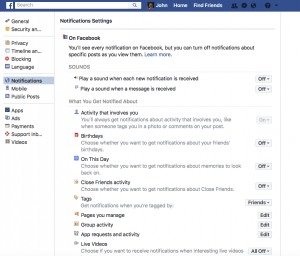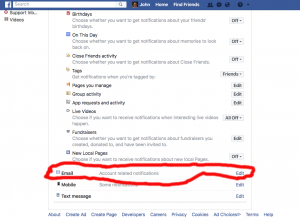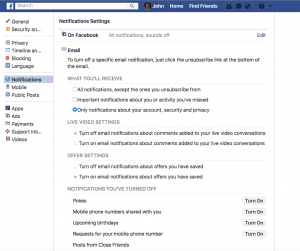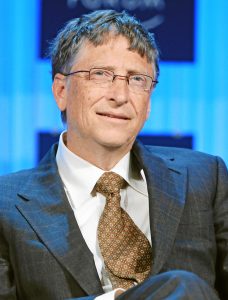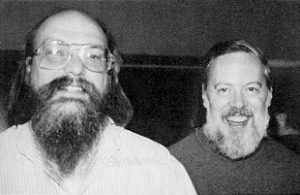
Why should you learn mathematics? By mathematics, I am not referring to basic arithmetic: addition, subtraction, multiplication, division, and raising a number to a power — for example for an interest calculation in personal finance. There is little debate that in the modern world the vast majority of people need to know basic arithmetic to buy and sell goods and services and perform many other common tasks. By mathematics I mean more advanced mathematics such as algebra, geometry, trigonometry, calculus, linear algebra, and college level statistics.
I am not referring to highly specialized advanced areas of mathematics such as number theory or differential geometry generally taught after the sophomore year in college or in graduate school.
I am following the language of Andrew Hacker in his book The Math Myth: And Other STEM Delusions in which he argues the algebra requirement should be eliminated in high schools, community colleges, and universities except for degrees that genuinely require mathematics. Hacker draws a distinction between arithmetic which is clearly needed by all and mathematics such as algebra which few use professionally.
A number of educators such as Eloy Ortiz Oakley, the chancellor of California’s community colleges, have embraced a similar view, even arguing that abolishing the algebra requirement is a civil rights issue since some minority groups fail the algebra requirement at higher rates than white students. Yes, he did say it is a civil rights issue:
The second thing I’d say is yes, this is a civil rights issue, but this is also something that plagues all Americans — particularly low-income Americans. If you think about all the underemployed or unemployed Americans in this country who cannot connect to a job in this economy — which is unforgiving of those students who don’t have a credential — the biggest barrier for them is this algebra requirement. It’s what has kept them from achieving a credential.
(emphasis added)
Eloy Ortiz Oakley on NPR (Say Goodbye to X + Y: Should Community Colleges Abolish Algebra? July 19, 2017)
At present, few jobs, including the much ballyhooed software development jobs, require more than basic arithmetic as defined above. For example, the famous code.org “What Most Schools Don’t Teach” video on coding features numerous software industry luminaries assuring the audience how easy software development is and how little math is involved. Notably Bill Gates at one minute and forty-eight seconds says: “addition, subtraction…that’s about it.”
Bill Gates assessment of the math required in software development today is largely true unless you are one of the few percent of software developers working on highly mathematical software: video codecs, speech recognition engines, gesture recognition algorithms, computer graphics for games and video special effects, GPS, Deep Learning, FDA drug approvals, and other exotic areas.
Thus, the question arises why people who do not use mathematics professionally ought to learn mathematics. I am not addressing the question of whether there should be a requirement to pass algebra to graduate high school or for a college degree such a veterinary degree where there is no professional need for mathematics. The question is whether people who do not need mathematics professionally should still learn mathematics — whether it is required or not.
People should learn mathematics because they need mathematics to make informed decisions about their health care, their finances, public policy issues that affect them such as global warming, and engineering issues such as the safety of buildings, aircraft, and automobiles — even though they don’t use mathematics professionally.
The need to understand mathematics to make informed decisions is increasing rapidly with the proliferation of “big data” and “data science” in recent years: the use and misuse of statistics and mathematical modeling on the large, rapidly expanding quantities of data now being collected with extremely powerful computers, high speed wired and wireless networks, cheap data storage capacity, and inexpensive miniature sensors.
Health and Medicine
An advanced knowledge of statistics is required to evaluate the safety and effectiveness of drugs, vaccines, medical treatments and devices including widely used prescription drugs. A study by the Mayo Clinic in 2013 found that nearly 7 in 10 (70%) of Americans take at least one prescription drug. Another study published in the Journal of the American Medical Association (JAMA) in 2015 estimated about 59% of Americans are taking a prescription drug. Taking a prescription drug can be a life and death decision as the horrific case of the deadly pain reliever Vioxx discussed below illustrates.
The United States and the European Union have required randomized clinical trials and detailed sophisticated statistical analyses to evaluate the safety and effectiveness of drugs, medical devices, and treatments for many decades. Generally, these analyses are performed by medical and pharmaceutical companies who have an obvious conflict of interest. At present, doctors and patients often find themselves outmatched in evaluating the claims for the safety and effectiveness of drugs, both new and old.
In the United States, at least thirty-five FDA approved drugs have been withdrawn due to serious safety problems, generally killing or contributing to the deaths of patients taking the drugs.
The FDA has instituted an FDA Adverse Events Reporting System (FDAERS) for doctors and other medical professionals to report deaths and serious health problems such as hospitalization suspected of being caused by adverse reactions to drugs. In 2014, 123,927 deaths were reported to the FDAERS and 807,270 serious health problems. Of course, suspicion is not proof and a report does not necessarily mean the reported drug was the cause of the adverse event.
Vioxx (generic name rofecoxib) was a pain-killer marketed by the giant pharmaceutical company Merck (NYSE:MRK) between May of 1999 when it was approved by the United States Food and Drug Administration (FDA) and September of 2004 when it was withdrawn from the market. Vioxx was marketed as a “super-aspirin,” allegedly safer and implicitly more effective than aspirin and much more expensive, primarily to elderly patients with arthritis or other chronic pain. Vioxx was a “blockbuster” drug with sales peaking at about $2.5 billion in 2003 1 and about 20 million users 2. Vioxx probably killed between 20,000 and 100,000 patients between 1999 and 2004 3.
Faulty blood clotting is thought to be the main cause of most heart attacks and strokes. Unlike aspirin, which lowers the probability of blood coagulation (clotting) and therefore heart attacks and strokes, Vioxx increased the probability of blood clotting and the probability of strokes and heart attacks by about two to five times.
Remarkably, Merck proposed and the FDA approved Phase III clinical trials of Vioxx with too few patients to show that Vioxx was actually safer than the putative 3.8 deaths per 10,000 patients rate (16,500 deaths per year according to a controversial study used to promote Vioxx) from aspirin and other non-steroidal anti-inflammatory drugs (NSAIDs) such as ibuprofen (the active ingredient in Advil and Motrin), naproxen (the active ingredient in Aleve), and others.
The FDA guideline, Guideline for Industry: The Extent of Population Exposure to Assess Clinical Safety: For Drugs Intended for Long-Term Treatment of Non-Life-Threatening Conditions (March 1995), only required enough patients in the clinical trials to reliably detect a risk of about 0.5 percent (50 deaths per 10,000) of death in patients treated for six months or less (roughly equivalent to one percent death rate for one year assuming a constant risk level) and about 3 percent (300 deaths per 10,000) for one year (recommending about 1,500 patients for six months or less and about 100 patients for at least one year without supporting statistical power computations and assumptions in the guideline document).
The implicit death rate detection threshold in the FDA guideline was well above the risk from aspirin and other NSAIDs and at the upper end of the rate of cardiovascular “events” caused by Vioxx. FDA did not tighten these requirements for Vioxx even though the only good reason for the drug was improved safety compared to aspirin and other NSAIDs. In general, the randomized clinical trials required by the FDA for drug approval have too few patients – insufficient statistical power in statistics terminology – to detect these rare but deadly events 4.
To this day, most doctors and patients lack the statistical skills and knowledge to evaluate the safety level that can be inferred from the FDA required clinical trials. There are many other advanced statistical issues in evaluating the safety and effectiveness of drugs, vaccines, medical treatments, and devices.
Finance and Real Estate
Mathematical models have spread far and wide in finance and real estate, often behind the scenes invisible to casual investors. A particularly visible example is Zillow’s ZEstimate of the value of homes, consulted by home buyers and sellers every day. Zillow is arguably the leading online real estate company. In March 2014, Zillow had over one billion page views, beating competitors Trulia.com and Realtor.com by a wide margin; Zillow has since acquired Trulia.
According to a 2013 Gallup poll, sixty-two percent (62%) of Americans say they own their home. According to a May 2014 study by the Consumer Financial Protection Bureau, about eighty percent (80%) of Americans 65 and older own their home. Homes are a large fraction of personal wealth and retirement savings for a large percentage of Americans.
Zillow’s algorithm for valuing homes is proprietary and Zillow does not disclose the details and/or the source code. Zillow hedges by calling the estimate an “estimate” or a “starting point.” It is not an appraisal.
However, Zillow is large and widely used, claiming estimates for about 110 million homes in the United States. That is almost the total number of homes in the United States. There is the question whether it is so large and influential that it can effectively set the market price.
Zillow makes money by selling advertising to realty agents. Potential home buyers don’t pay for the estimates. Home sellers and potential home sellers don’t pay directly for the estimates either. This raises the question whether the advertising business model might have an incentive for a systematic bias in the estimates. One could argue that a lower valuation would speed sales and increase commissions for agents.
Zillow was recently sued in Illinois over the ZEstimate by a homeowner — real estate lawyer Barbara Andersen 🙂 — claiming the estimate undervalued her home and made it difficult therefore to sell the home. The suit argues that the estimate is in fact an appraisal, despite claims to the contrary by Zillow, and therefore subject to Illinois state regulations regarding appraisals. Andersen has reportedly dropped this suit and expanded to a class-action lawsuit by home builders in Chicago again alleging that the ZEstimate is an appraisal and undervalues homes.
The accuracy of Zillow’s estimate has been questioned by others over the years including home owners, real estate agents, brokers, and the Los Angeles Times. Complaints often seem to involve alleged undervaluation of homes.
On the other hand, Zillow CEO Spencer Rascoff’s Seattle home reportedly sold for $1.05 million on Feb. 29, 2016, 40 percent less than the Zestimate of $1.75 million shown on its property page a day later (March 1, 2016). 🙂
As in the example of Vioxx and other FDA drug approvals, it is actually a substantial statistical analysis project to independently evaluate the accuracy of Zillow’s estimates. What do you do if Zillow substantially undervalues your home when you need to sell it?
Murky mathematical models of the value of mortgage backed securities played a central role in the financial crash in 2008. In this case, the models were hidden behind the scenes and invisible to casual home buyers or other investors. Even if you are aware of these models, how do you properly evaluate their effect on your investment decisions?
Public Policy
Misleading and incorrect statistics have a long history in public policy and government. Darrell Huff’s classic How to Lie With Statistics (1954) is mostly concerned with misleading and false polls, statistics, and claims from American politics in the 1930’s and 1940’s. It remains in print, popular and relevant today. Increasingly however political controversies involve often opaque computerized mathematical models rather than the relatively simple counting statistics debunked in Huff’s classic book.
Huff’s classic and the false or misleading counting statistics in it generally required only basic arithmetic to understand. Modern political controversies such as Value Added Models for teacher evaluation and the global climate models used in the global warming controversy go far beyond basic arithmetic and simple counting statistics.
The Misuse of Statistics and Mathematics
Precisely because many people are intimidated by mathematics and had difficulty with high school or college mathematics classes including failing the courses, statistics and mathematics are often used to exploit and defraud people. Often the victims are the poor, marginalized, and poorly educated. Mathematician Cathy O’Neil gives many examples of this in her recent book Weapons of Math Destruction: How Big Data Increases Inequality and Threatens Democracy (2016).
The misuse of statistics and mathematics is not limited to poor victims. Bernie Madoff successfully conned large numbers of wealthy, highly educated investors in both the United States and Europe using the arcane mathematics of options as a smokescreen. These sophisticated investors were often unable to perform the sort of mathematical analysis that would have exposed the fraud.
Rich and poor alike need to know mathematics to protect themselves from this frequent and growing misuse of statistics and mathematics.
Algebra and College Level Statistics
The misleading and false counting statistics lampooned by Darrell Huff in How to Lie With Statistics does not require algebra or calculus to understand. In contrast, the college level statistics often encountered in more complex issues today does require a mastery of algebra and sometimes calculus.
For example, one of the most common probability distributions encountered in real data and mathematical models is the Gaussian, better known as the Normal Distribution or Bell Curve. This is the common expression for the Gaussian in algebraic notation.
[latex]{P(x) = \frac{1}{{\sigma \sqrt {2\pi } }}e^{{{ – \left( {x – \mu } \right)^2 } \mathord{\left/ {\vphantom {{ – \left( {x – \mu } \right)^2 } {2\sigma ^2 }}} \right. \kern-\nulldelimiterspace} {2\sigma ^2 }}}}[/latex]
[latex]x[/latex] is the position of the data point. [latex]\mu[/latex] is the mean of the distribution. If I have a data set obeying the Normal Distribution, most of the data points will be near the mean [latex]\mu[/latex] and fewer further away. [latex]\sigma[/latex] is the standard deviation — loosely the width — of the distribution. [latex]\pi[/latex] is the ratio of the circumference of a circle to the diameter. [latex]e[/latex] is Euler’s number (about 2.718281828459045).
This is a histogram of simulated data following the Normal Distribution/Bell Curve/Gaussian with a mean [latex]\mu[/latex] of zero (0.0) and a standard deviation [latex]\sigma[/latex] of one (1.0):
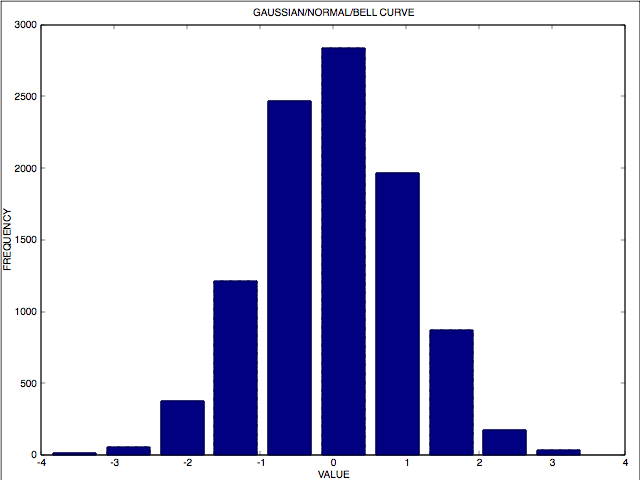
To truly understand the Normal Distribution you need to know Euler’s number e and algebraic notation and symbolic manipulation. It is very hard to express the Normal Distribution with English words or basic arithmetic. The Normal Distribution is just one example of the use of algebra in college level statistics. In fact, an understanding of calculus is needed to have a solid understanding and mastery of college level statistics.
Conclusion
People should learn mathematics — meaning subjects beyond basic arithmetic such as algebra, geometry, trigonometry, calculus, linear algebra, and college level statistics — to make informed decisions about their health care, personal finances and retirement savings, important public policy issues such as teacher evaluation and public education, and other key issues such as evaluating the safety of buildings, airplanes, and automobiles.
There is no doubt that many people experience considerable difficulty learning mathematics whether due to poor teaching, inadequate learning materials or methods, or other causes. There is and has been heated debate over the reasons. These difficulties are not an argument for not learning mathematics. Rather they are an argument for finding better methods to learn and teach mathematics to everyone.
End Notes
1 “How did Vioxx debacle happen?” By Rita Rubin, USA Today, October 12, 2004 The move was a stunning denouement for a blockbuster drug that had been marketed in more than 80 countries with worldwide sales totaling $2.5 billion in 2003.
2 Several estimates of the number of patients killed and seriously harmed by Vioxx were made. Dr. David Graham’s November 2004 Testimony to the US Senate Finance Committee gives several estimates including his own.
3 A “blockbuster” drug is pharmaceutical industry jargon for a drug with at least $1 billion in annual sales. Like Vioxx, it need not be a “wonder drug” that cures or treats a fatal or very serious disease or condition.
4 Drug safety assessment in clinical trials: methodological challenges and opportunities
Sonal Singh and Yoon K Loke
Trials 2012 13:138
DOI: 10.1186/1745-6215-13-138© Singh and Loke; licensee BioMed Central Ltd. 2012
Received: 9 February 2012 Accepted: 30 July 2012 Published: 20 August 2012
The premarketing clinical trials required for approval of a drug primarily guard against type 1 error. RCTs are usually statistically underpowered to detect the specific harm either by recruitment of a low-risk population or low intensity of ascertainment of events. The lack of statistical significance should not be used as proof of clinical safety in an underpowered clinical trial.
Credits
The image of an ancient mathematician or engineer with calipers, often identified as Euclid or Archimedes, is from The School of Athens fresco by Raphael by way of Wikimedia Commons. It is in the public domain.
(C) 2017 John F. McGowan, Ph.D.
About the author
John F. McGowan, Ph.D. solves problems using mathematics and mathematical software, including developing gesture recognition for touch devices, video compression and speech recognition technologies. He has extensive experience developing software in C, C++, MATLAB, Python, Visual Basic and many other programming languages. He has been a Visiting Scholar at HP Labs developing computer vision algorithms and software for mobile devices. He has worked as a contractor at NASA Ames Research Center involved in the research and development of image and video processing algorithms and technology. He has published articles on the origin and evolution of life, the exploration of Mars (anticipating the discovery of methane on Mars), and cheap access to space. He has a Ph.D. in physics from the University of Illinois at Urbana-Champaign and a B.S. in physics from the California Institute of Technology (Caltech).


